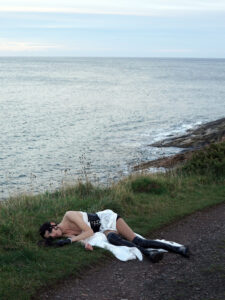
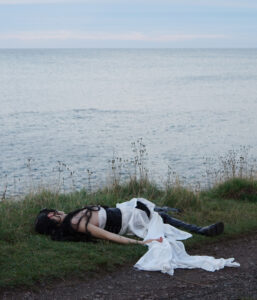
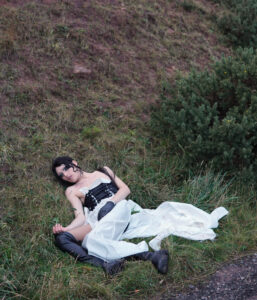
This will be my place to display different concepts, thoughts, processes in the making of my final year project in a world without shared studio spaces.
Throughout the process of discussing my work and showing it to others I was recommended to look at the work of Tschape. Without knowing any of her work beforehand it became apparent that in her series ‘100 Little Deaths,’ she had already made a body of work holding strong similarities to the images I have intended to create.
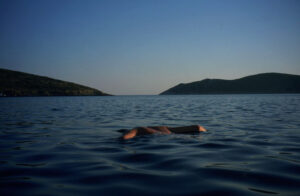
Antiparos (1998) from the series 100 Little Deaths.
Starting the project in 1996 and working on it through to 2002. The work presents the artist in a series of 100 self portraits, lying face down in different environments across the world. The work also acts as a travel diary for the artist between these years, her work is symbolic of the idea of leaving a part of yourself in every place you visit. In visiting these places, she had a taste for a different life for that short period of time her routine, connections and lifestyle made adjustments and in leaving, she cuts that new life short.
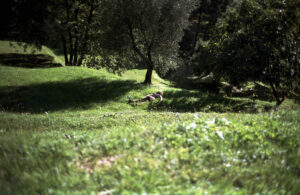
Tuscany (2002) from the series 100 Little Deaths.
“It was the idea of me dying, or living a little history that was very short in every place.”
Tschape describes the series as a pace between comedy and tragedy allowing the work to become surreal yet theatrical.
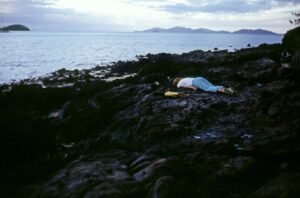
Fiji. (2002) from the series 100 Little Deaths.
These little deaths she photographs allow the artist to mark an end of the person she has developed into in a specific location, to represent the death of an old identity in order to allow for her to move on to consume a new identity in a new location until her next little death.
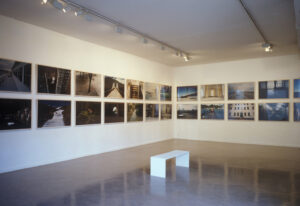
Series exhibited in France, 2002.
Taken from– National Museum of Women in the Arts
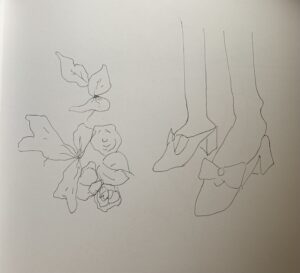

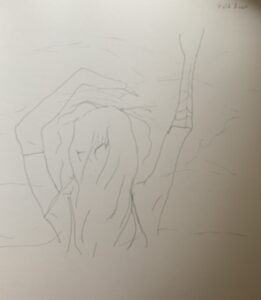
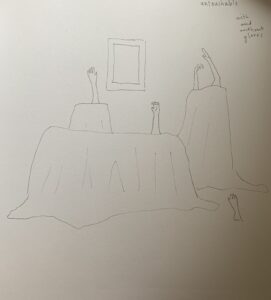
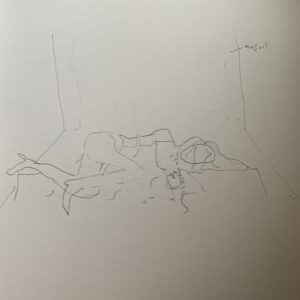

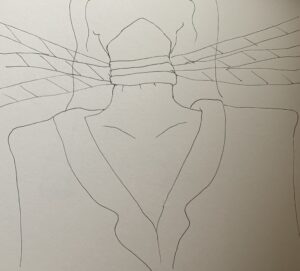

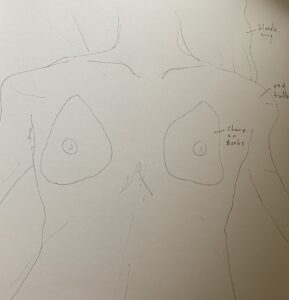

Potential ways to look at elements of masculinity/femininity, the materiality and objectification of gender (how gender is associated with objects) and different ways of representing the many deaths of Angel – the deaths representing her suppression in the past and having Angel representing a hyper feminine representation of myself, the artist, in the past.
Patrick Ireland 1972–2008
“During the Irish Exhibition of Living Art in 1972, Brian O’Doherty, in a performance before 30 invited witnesses and assisted by artists Robert Ballagh and Brian King, undertook to sign his artworks Patrick Ireland ‘until such time as the British military presence is removed from Northern Ireland’. After 36 years of making art as Patrick Ireland, O’Doherty reclaimed his birth name with the symbolic burial of his alter ego in the grounds of IMMA on the afternoon of Tuesday 20 May 2008.”
Playing character in work, also killing them off eventually. Performance has a political motive, encouraging change.
Juno Birch is a sculptor and drag queen with a very distinctive retro 60’s campy style, with a very original and thought out character I would consider her drag persona as modern performance art. Her sculpture work closely associated to her drag character also informs the aesthetics of her character. Drawing inspiration from films and pop culture, mainly interests from her youth that she would cling to as a form of escapism as a young trans person trying to find ways to associate to femininity. Birch uses her drag and sculptures to celebrate trans bodies through a mix of beauty, fashion and comedy.

‘Miss Moon’ (2019/20) Sculpture work taken from Birch’s instagram.
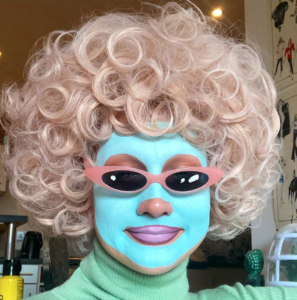
Birch’s drag revolves around the character of an alien women trying to blend in as a 1960’s housewife. Playing with aesthetics of the time associated with femininity.
Vogue interview where Birch describes her work as both a drag queen and sculptor.
“I’m Juno Birch, a glamorous alien women who crash landed on Earth in 1962. Ever since I’ve been tragically dress like a lady, but kind of doing it a bit clumsily.”


Bread bag as accessory
“A lot of the time my sculptures will exaggerate artificial beauty. Very often I will make a sculpture and design a look first, and then do it on myself.”
Influenced by characters in movies
Would draw exaggerated women as a child, with big breasts, long hair and massive heels. It became a form of escapism for her as a young trans child not yet knowing what that was. She explains it was a way to express the femininity she craved and lacked as a child.
Kitsch bold aesthetics are found both in her performative and sculptural work. Mocks the misogynistic ‘role’ of a 1960’s housewife.